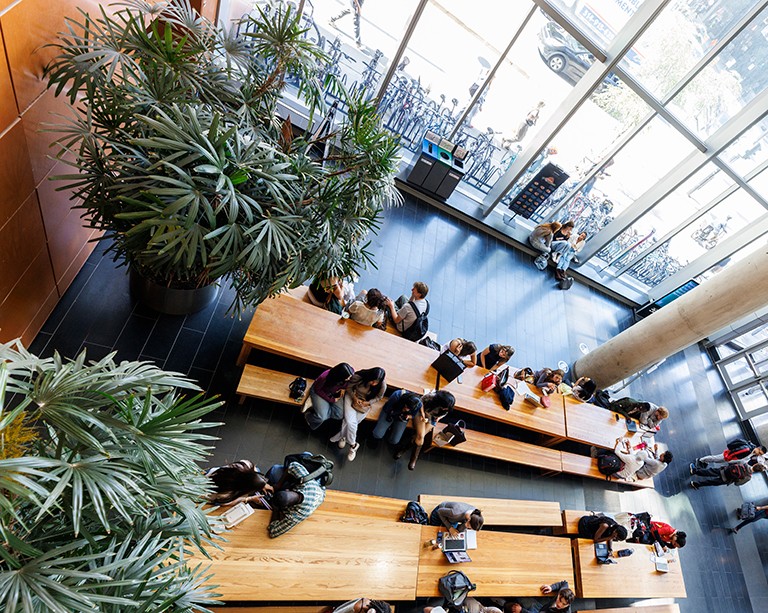How to avoid the pitfall of plagiarism

Plagiarism is a word thrown around a lot at universities. First-year students are warned about the consequences and professors reiterate its seriousness on almost every course outline. But is plagiarism, and what it consists of, fully understood?
“People ask a lot of questions about citations,” says Luigina Vileno, head of the Vanier Library. “Oftentimes, they don’t know how to prepare their reference page. Most students are very confused about citing.”
In fact, “plagiarism” is one of the top search words on Concordia’s website and at its libraries. So what are the most common causes and conditions?
Last-minute decision-making
“The pressure to succeed combined with anxiety about completing an assignment on time can lead to poor choices with negative long-term consequences,” says Sandra Gabriele, vice-provost of Innovation in Teaching and Learning. “Planning ahead and becoming familiar with what constitutes plagiarism is a first step.”
Acts of plagiarism vary between faculties and departments, but more often than not they happen when a student copies and pastes information from a source and then forgets to cite where it came from.
In departments with lab reports or assignments, like at the Gina Cody School of Engineering and Computer Science or the John Molson School of Business, a common issue is that students borrow reports from someone who has previously taken the course and are tempted to copy from it.
This is plagiarism — not only by the student who copies, but also by the person lending the work.
“A student lending his lab material to another student is also in violation of the Academic Code of Conduct if there is a good chance that this material will be plagiarized,” says Marius Paraschivoiu, the associate dean of academic affairs for the Gina Cody School.
Ask questions, seek clarification
Plagiarism is taken seriously at the university and has a range of consequences, including a written reprimand, a statement on a student’s academic record, a reduced mark or failing mark on an assignment or a course.
It’s a lengthy and stressful process — but it can be easily avoided.
Each department teaches proper referencing and citation, and students are encouraged to ask questions and seek clarification. For example, Paraschivoiu says a common query relates to how many changed words constitute proper paraphrasing.
“Students should rewrite the text in their own words, which will lead to quite a different text,” he says. “And they also need to cite the source.”
Expert advice
The best place for information is the Concordia Library, which offers short, printable guides online that show how to correctly reference in various styles.
Vileno says the guides answer the most commonly asked questions. For more detailed information, copies of the style manuals are also available at both libraries.
The key is not to rely on memory. “I think people expect to know it, but it’s not something you know; it’s something you look up,” she says.
The librarians themselves are a wealth of information. Through their databases, they can help search for missing information to complete reference pages, and if the original source cannot be found, they can help the researcher find a new source containing the same information.
Preventive measures
Since the majority of plagiarism cases come from copying and pasting or a forgotten source, Gabriele’s advice is simple: be mindful every time you include someone else’s ideas in your own work and immediately note it.
She suggests highlighting citations and references, or changing their font colour immediately after pasting them into the assignment so they stand out at the editing stage.
When it comes to plagiarism, professors also have a role to play.
Course outlines should contain guidelines that lay out what constitutes plagiarism, along with its consequences. Professors can also help by changing their assignments and essay questions from year to year.
“Plagiarism is everyone’s responsibility, including faculty and staff,” Gabriele says. “While it’s not a pleasant topic, we all need to continue educating students, taking appropriate steps when plagiarism is suspected and supporting one another in the process.”
Find out more about Concordia's Academic Code of Conduct. Print out guides to citations and referencing.





